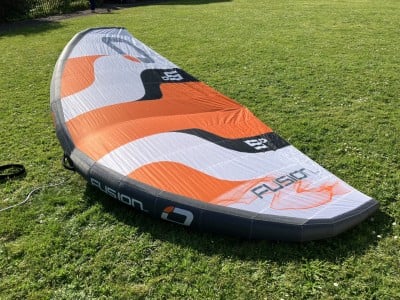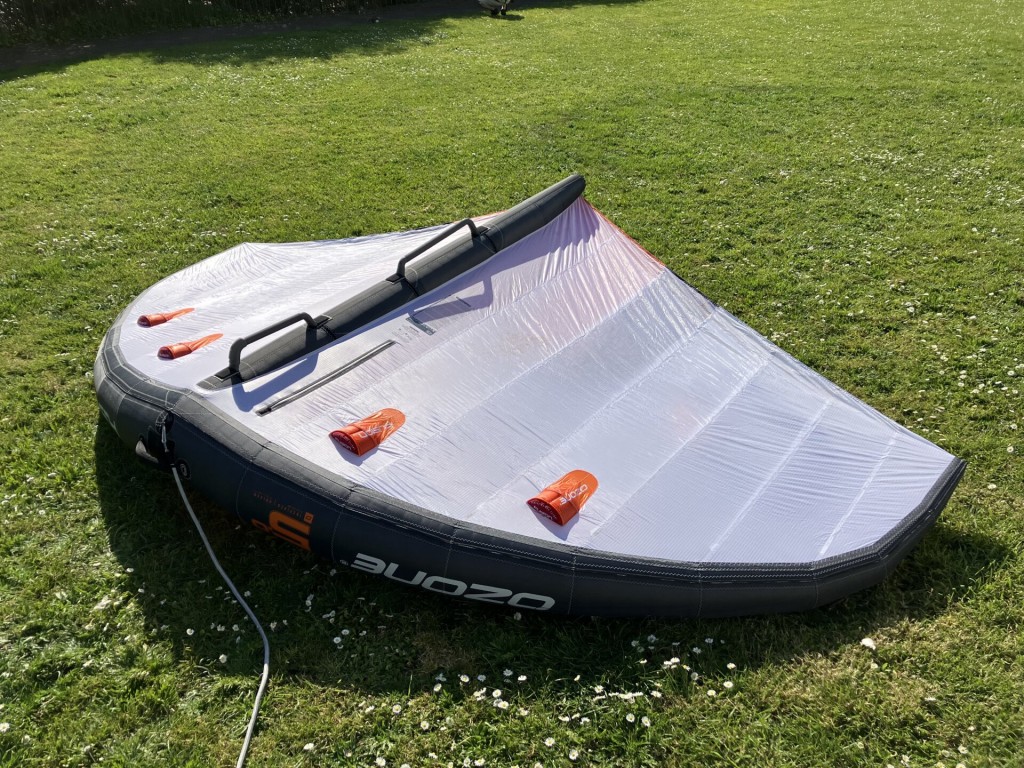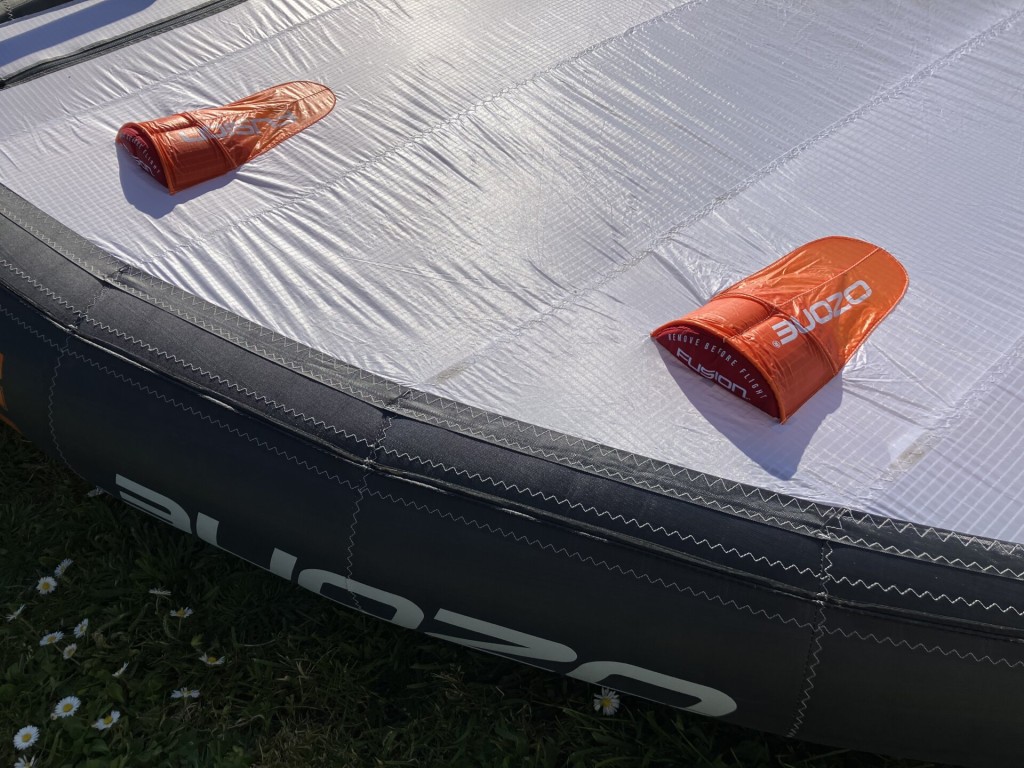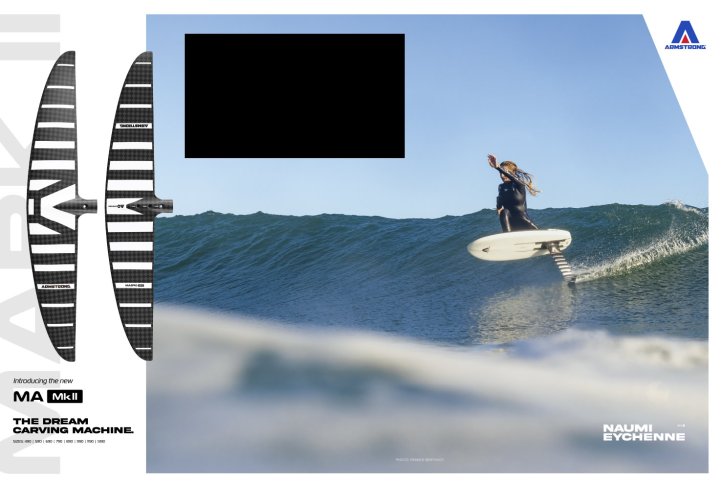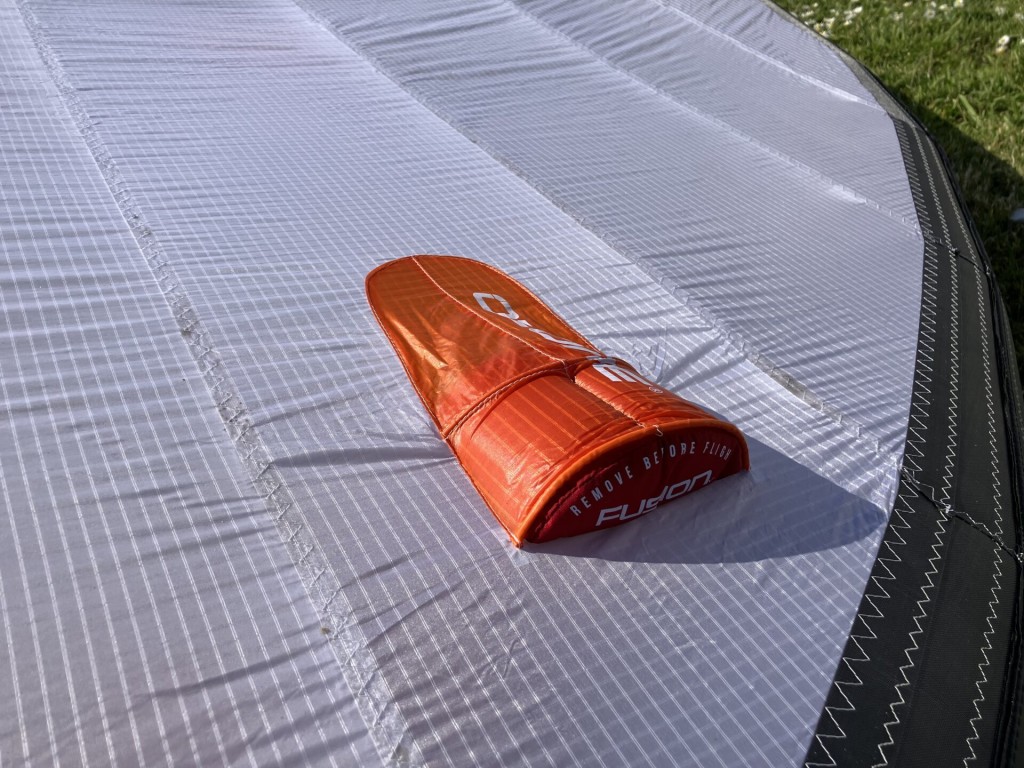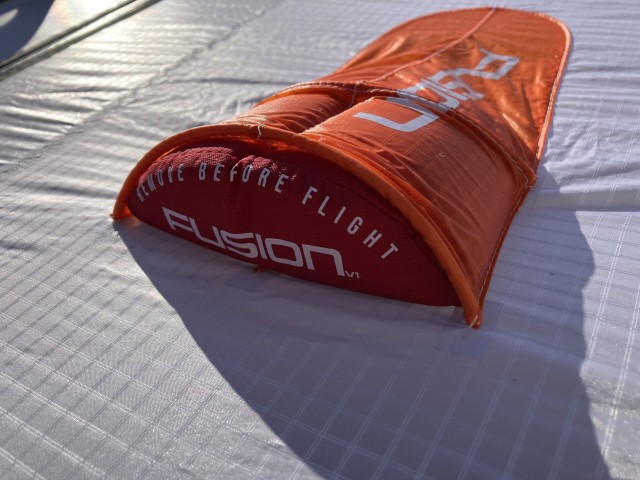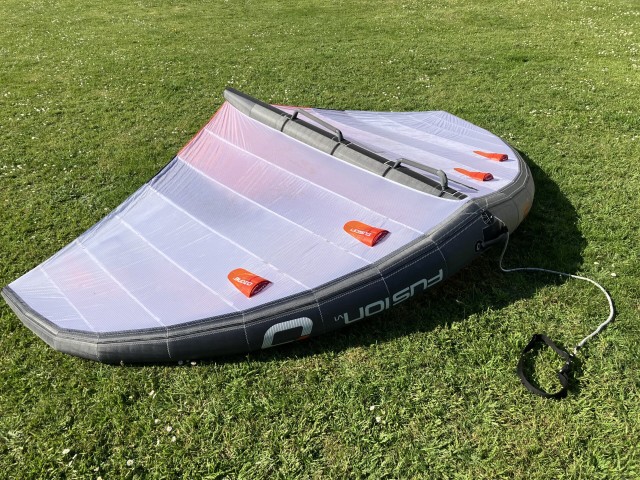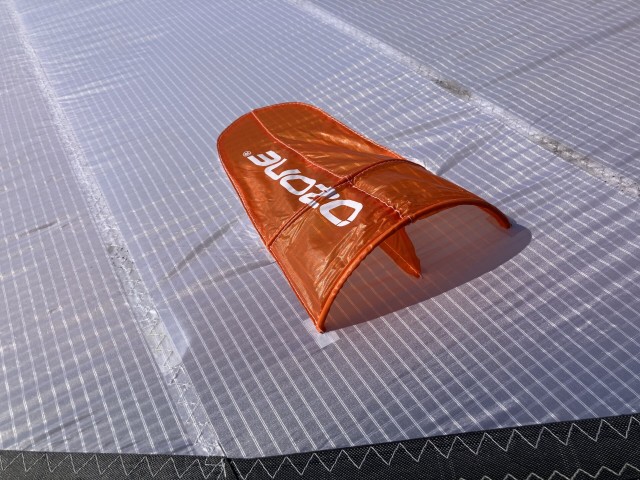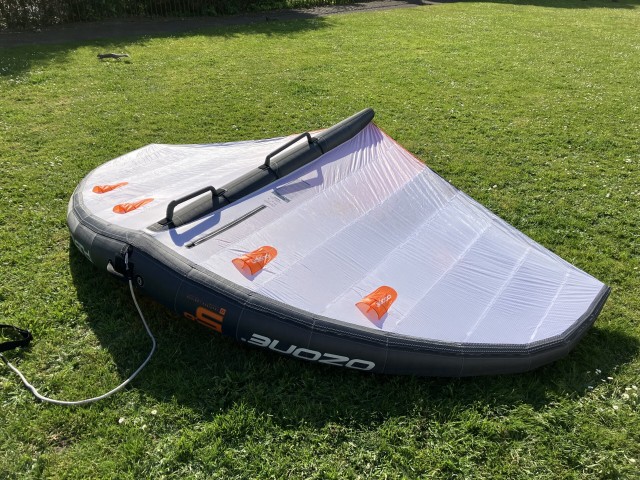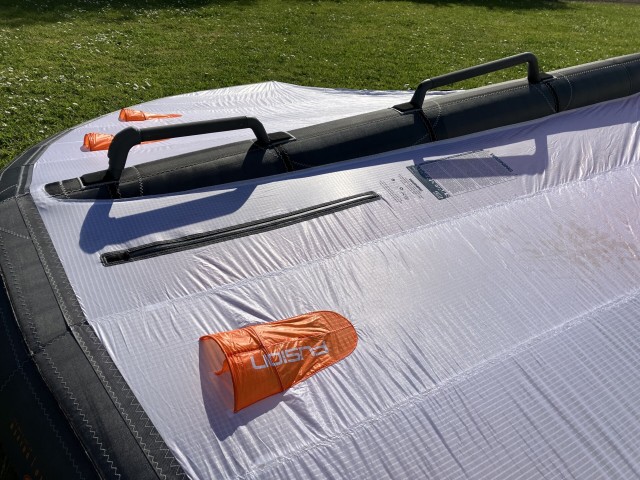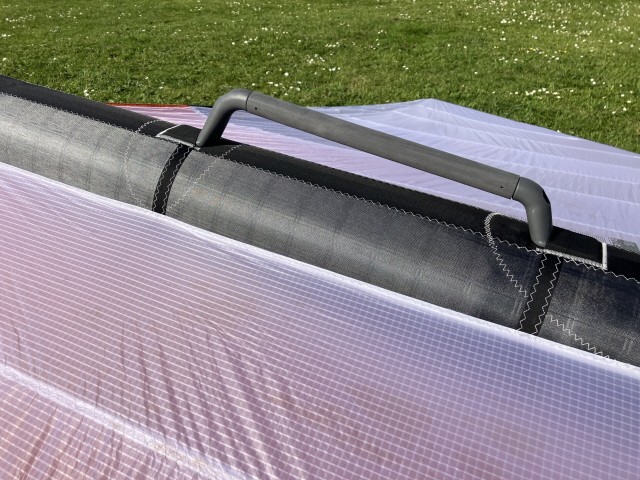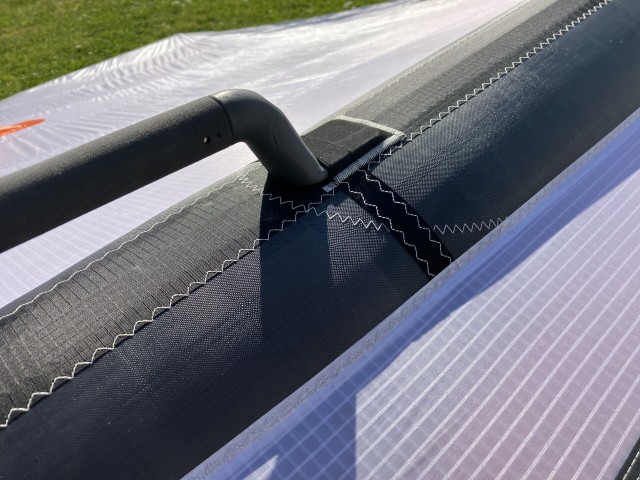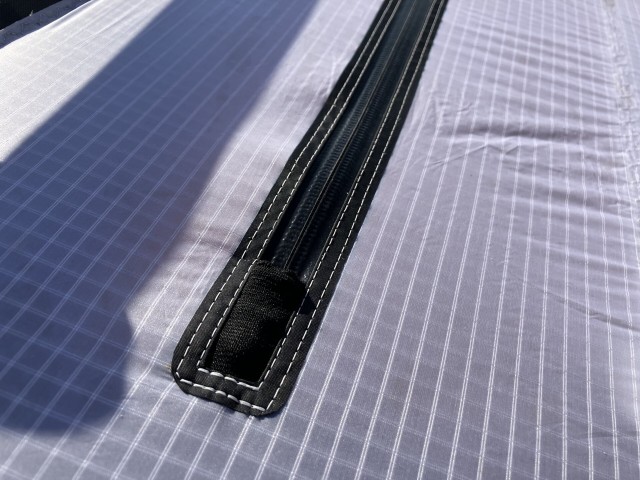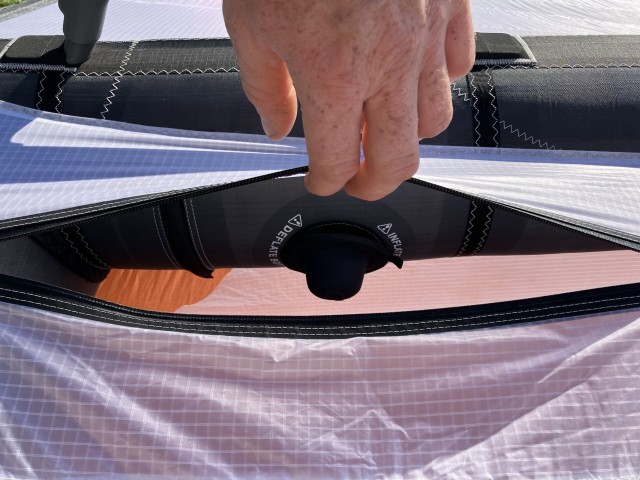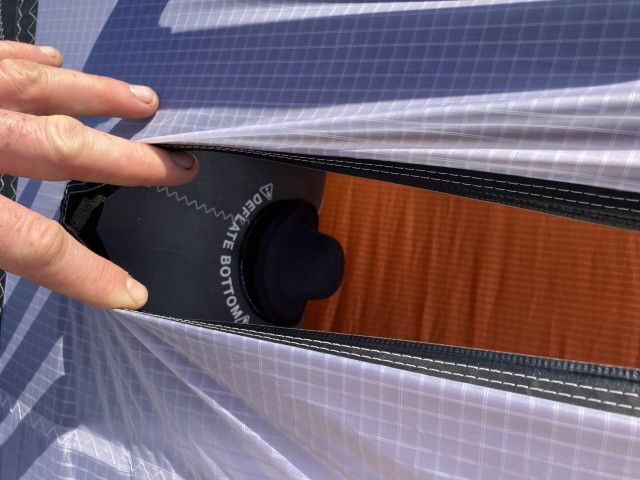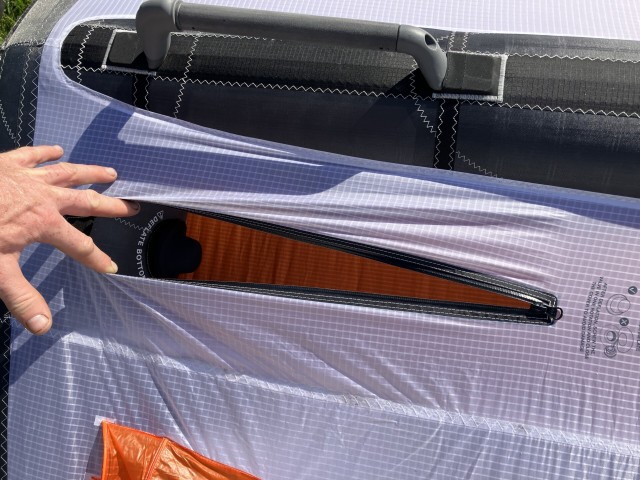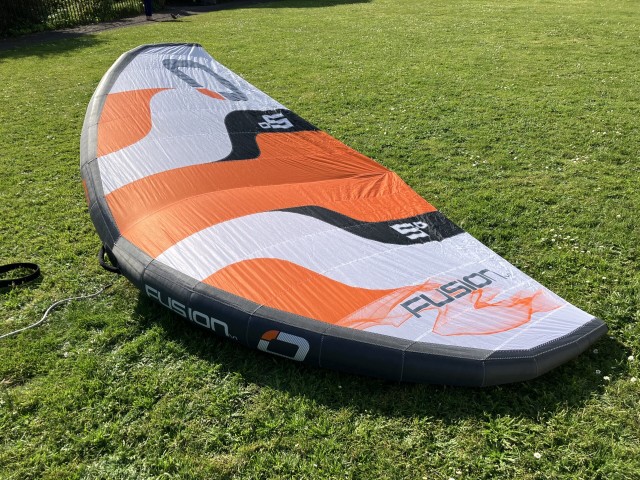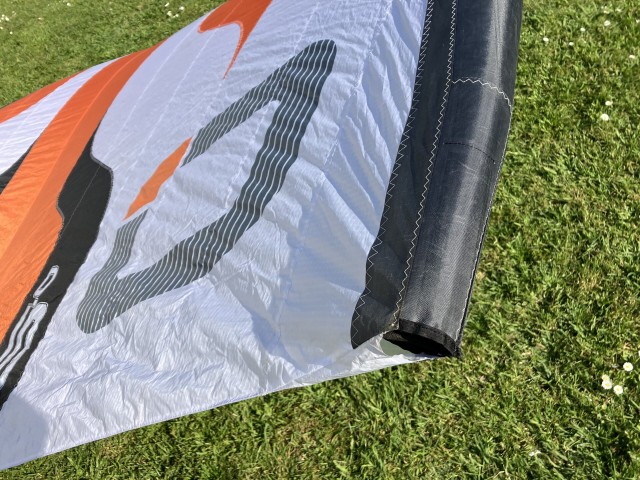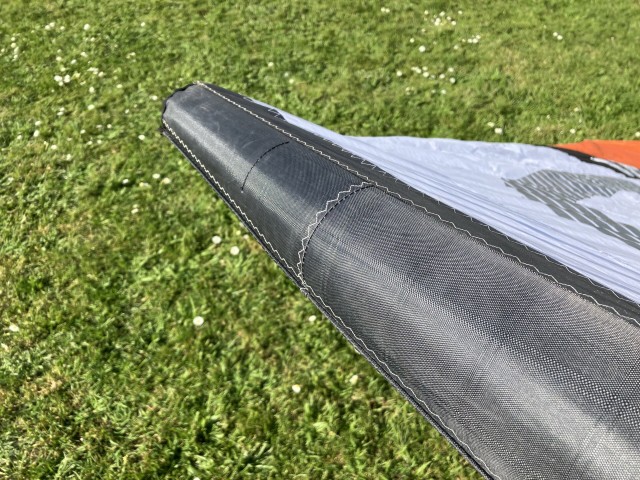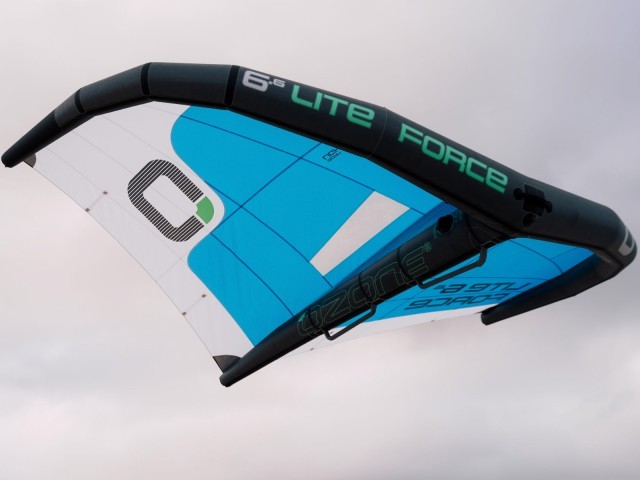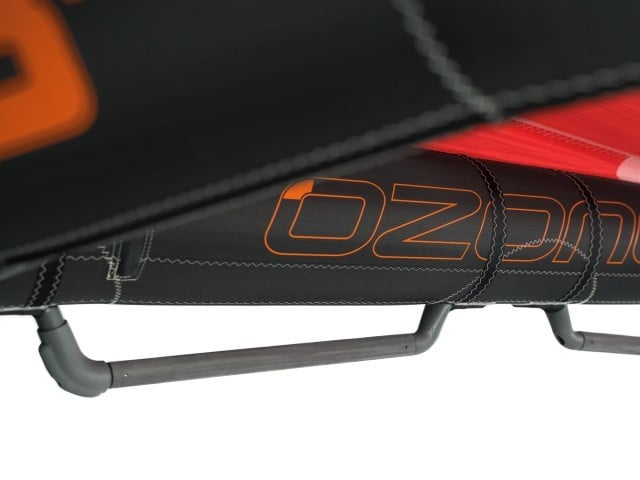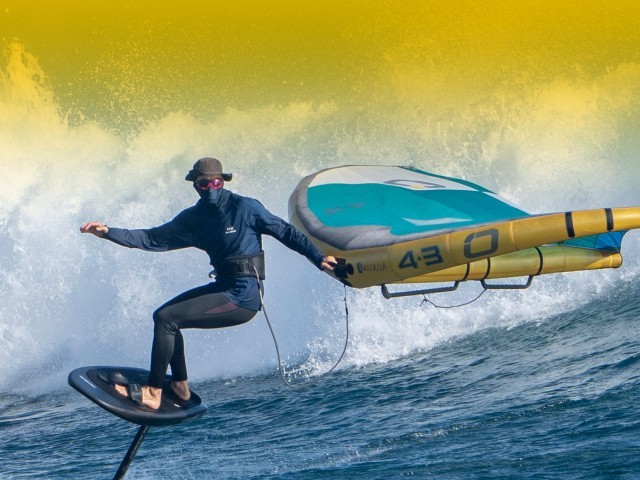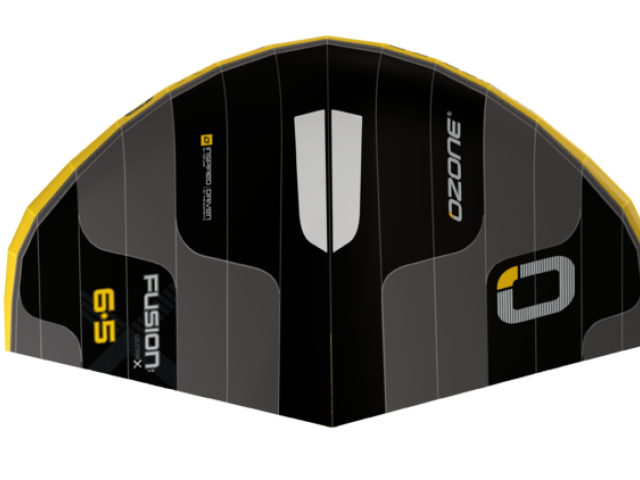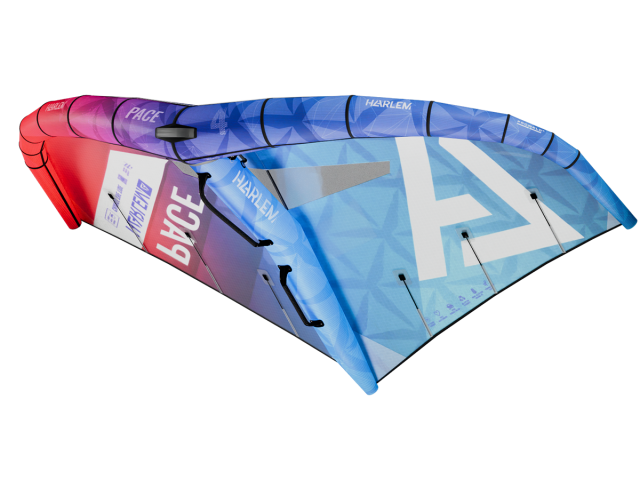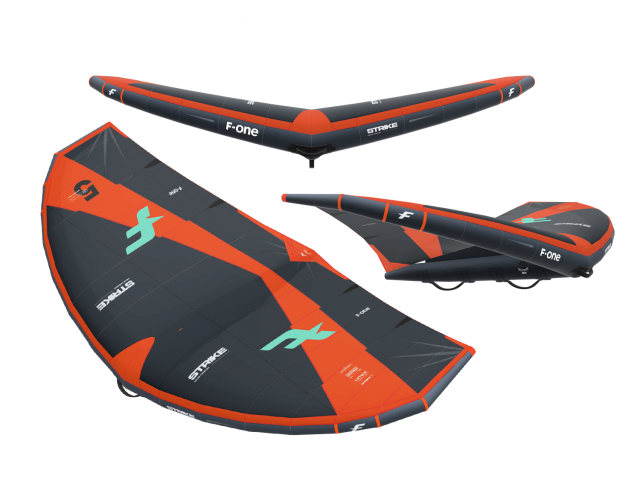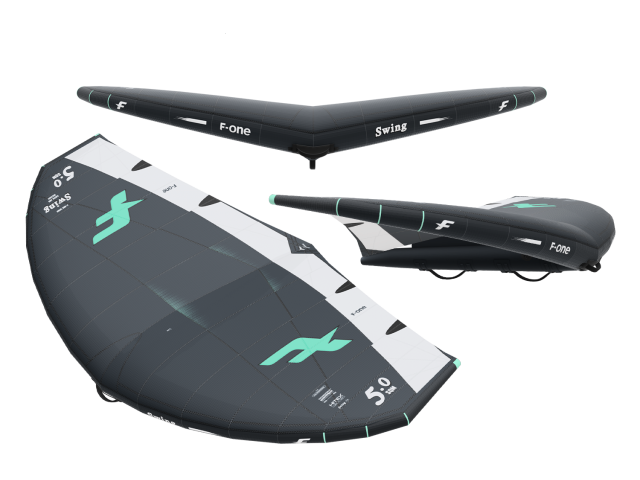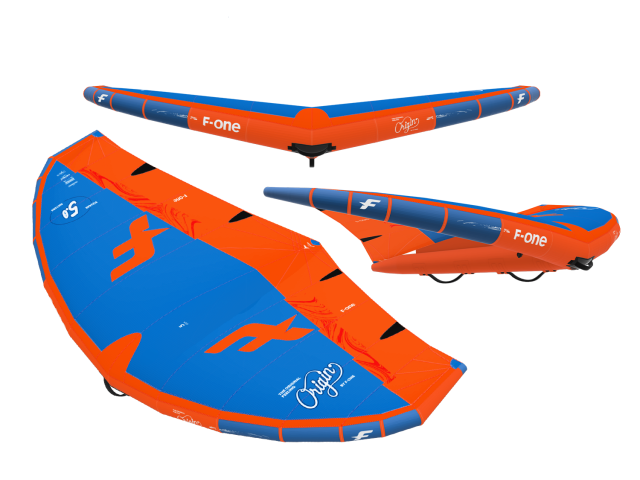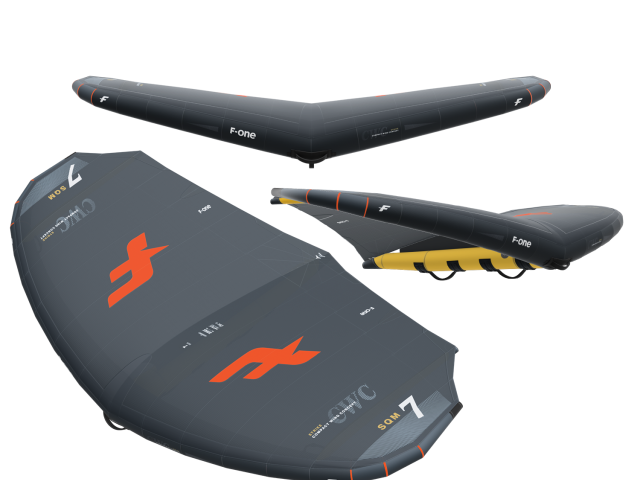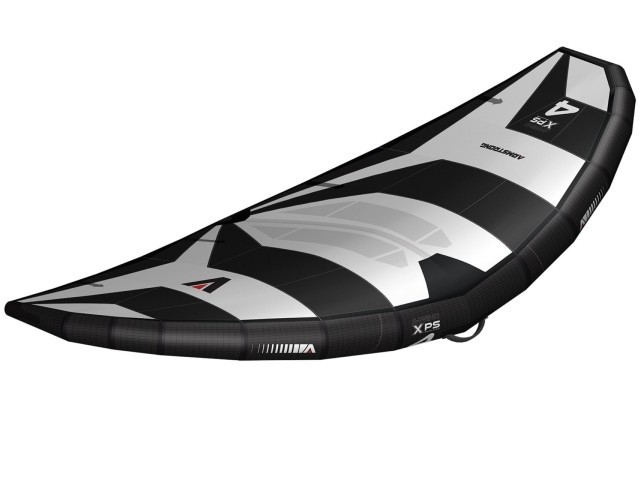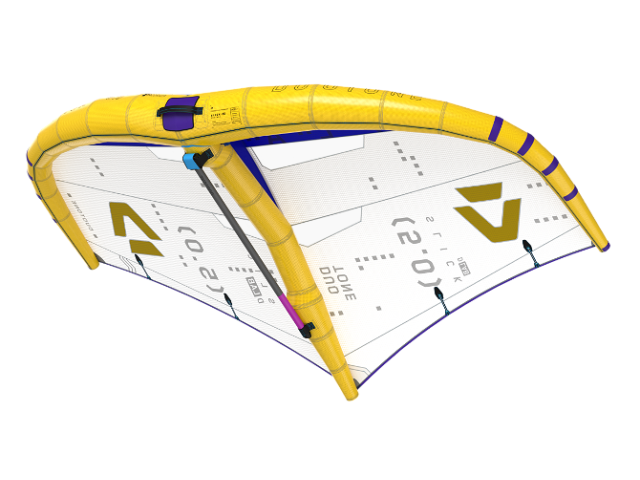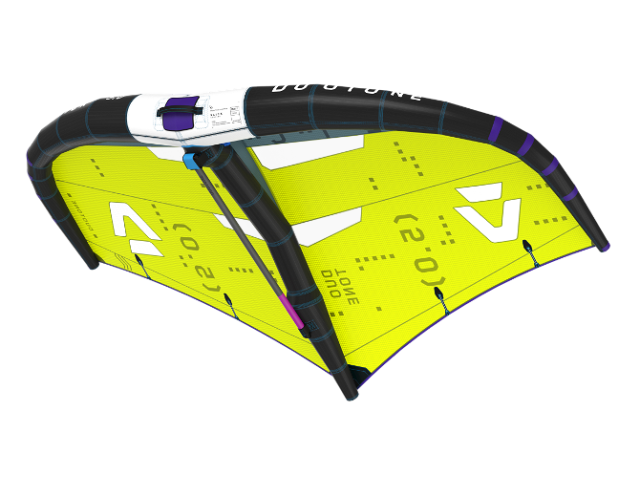The dust settled after the Ozone Fusion’s release at the end of 2023, but it is still a product many riders are desperate to get their hands on and take for a ride. Its very name, ‘Fusion’, is a nod to Ozone’s expansive knowledge base as leaders in the kite, paraglider, wingsuit, and wing industry. The utilisation of these combined experiences resulted in the Fusion project. It is the first double-skin wing and, as a result, the cleanest airfoil the wing industry has seen. As usual, Ozone’s marketing is focused on the product instead of maximising sales figures, and they unashamedly market it at advanced to expert freeriders. So, how does it perform? And is it only reserved for the advanced and above?
At a Glance
The Fusion wing presented the most exciting wing unboxing experience thus far, with so many construction details associated with the double skin format to look over. The initial observation was the aesthetic similarities to the Ozone Flux. A similar leading edge outline from the same Ozone ‘Performance Dacron’ material (lighter and stiffer than regular Dacron) with the same eva-covered hard handles. These handles are permanently fixed in position from now on, and the stitched attachment methodology appears to be heavily reinforced, so I’d expect a stiff construction that delivers plenty of control and response.
The second internal canopy panel that creates the ram-air structure is neatly stitched to the leading edge and strut similarly to the typical external canopy. Four ram-air inlets on the internal surface with a batten-style structure to keep them open, protected during storage by foam inserts. A spare or two would have been nice, as I can see myself losing one in haste to get on the water! There is a slimline waterproof zip (similar to those found on foil kites for deflation purposes) on the internal canopy, allowing access to the strut and leading edge valves. This also allows a sneak peek inside to see the internal ribs connecting the internal and external canopy surfaces, providing structural support and further optimising the airfoil profile.
Interestingly, unlike most of the wings on the market today, the canopy panels are simple longitudinal cuts that all run from the leading edge to the trailing edge. There are no radial panel cuts or stitching patterns at the trailing edge tip of the strut. Everything runs from LE to TE. This is to simplify an already complicated construction methodology and maintain compatibility with the internal ribs that connect the inner and outer canopy surfaces. These radial cuts on a ‘typical’ single surface wing are often used to optimally distribute canopy loads to the airframe and maintain sail tension during gusts and overpowered conditions. With the double skin and the positive internal pressure thanks to the ram-air intakes, I can only assume this tweak is no longer required.
Ozone regularly boasts about its self-owned in-house manufacturing facility in Vietnam, where almost all of its products are made…and quite rightly so. The construction quality and details appear to be of the highest quality.
Sizes: 2.4m, 3m, 3.6m, 4.3m, 5m, 5.7m, 6.5m, 7.3m
On the Water
The first impression of the Fusion is that it feels lighter during flight than you would expect, given the additional material and associated construction detail of the double skin format. This results from the clean, low-drag airfoil providing efficient lift. Even before engaging the wing and delivering wind to the ram-air intakes, both the top and bottom canopy surfaces are taught, and this is only enhanced when the wing is in flight and full of air. Any slack in any wing’s canopy will result in flutter (and therefore drag), and it is clear that Ozone was on a mission with this wing to minimise drag. The canopy surfaces remain flutter-free at all times.
Right from the get-go, when tacking upwind to get myself far enough away from the beach to to open the taps on the Fusion, I noticed the upwind angle and the efficiency of the tacks on this thing. Whenever I’m getting accustomed to a wing, I find the arc of my tacks is larger than normal as I get used to it, resulting in a longer time riding into the wind. This can result in a loss of speed and failed attempts. This never happened on the Fusion. The lack of drag when riding into the wind made the tacks much easier and more pleasurable. It reduces the stress and haste to get around and allows you to draw them out. The distance upwind you can gain during the tack, even performing them leisurely, is addictive.
It does take a little time to get used to the takeoff technique of the Fusion, and it doesn’t share the pumping characteristic that most single-skin wings share. I’m sure with more time, my technique would adapt to the Fusion and improve the low end, but for most, I’d recommend a longer and thinner (or generally reasonably proficient volume) board, at least to start with. The top end, however, takes no getting used to. You can ride these wings comfortably in higher winds than anything else. I’m not saying I can’t hang onto competitor wings in the same breeze, but the comfort when doing so is incomparable. It has a mystical ability to smooth gusty winds, as you don’t get the same power spikes during gusts. The wing remains controllable and smooth even when ridden very powered. I can see most Fusion riders taking a size higher than they’re used to, which will compensate for the different low-end techniques and provide them with thrilling top-end speeds that it delivers easily.
As often happens on new gear, it wasn’t long before I’d crashed, which allowed me to test the water uptake of the double skin design and the efficacy of the small wingtip drain ports. I was surprised by how little water was captured whilst the wing was dangling on the leash in the water, whilst handling the wing in preparation for take-off and during flat water crashes. In these situations, I can’t see there ever being enough water in the wing to have a significantly detrimental impact on its flight, assuming it is being used in enough wind in which you can get on foil. The water drains quickly when you re-engage the wing and have it flying ready for take-off. The only scenario I would be worried about is consecutive crashes in waves, perhaps followed by a lull in the wind. I can imagine the additional weight, combined with the lack of wind, could increase the difficulty of draining and slow down recovery and takeoff. Ozone doesn’t market the Fusion as the first choice of wings for the waves anyway, and only time will tell whether the double skin construction will handle a heavy break!
Overall
The Ozone Fusion is a unique wing that will appeal to many riders. It is an efficient, handling free-riding machine that excels in its riding speed and efficiency at all points of sail. Given its ability to ride at extreme angles upwind and downwind, it will particularly benefit those in their racing, longer distance exploratory rides, and those generally riding flat water spots, as it spices things up when there are no waves to play on! Is it only for advanced riders? I wouldn’t exclusively recommend it for advanced riders. Still, I’d say that unless you’re riding smallish foils and comfortable tacking and gybing, you’re not likely to exploit the potential top end that the Fusion can provide. It doesn’t mean you can’t aspire to that level, though!
Videos
This review was in Issue 20 of Tonic Mag.
For more information visit OzoneRelated
By Liam Proctor


